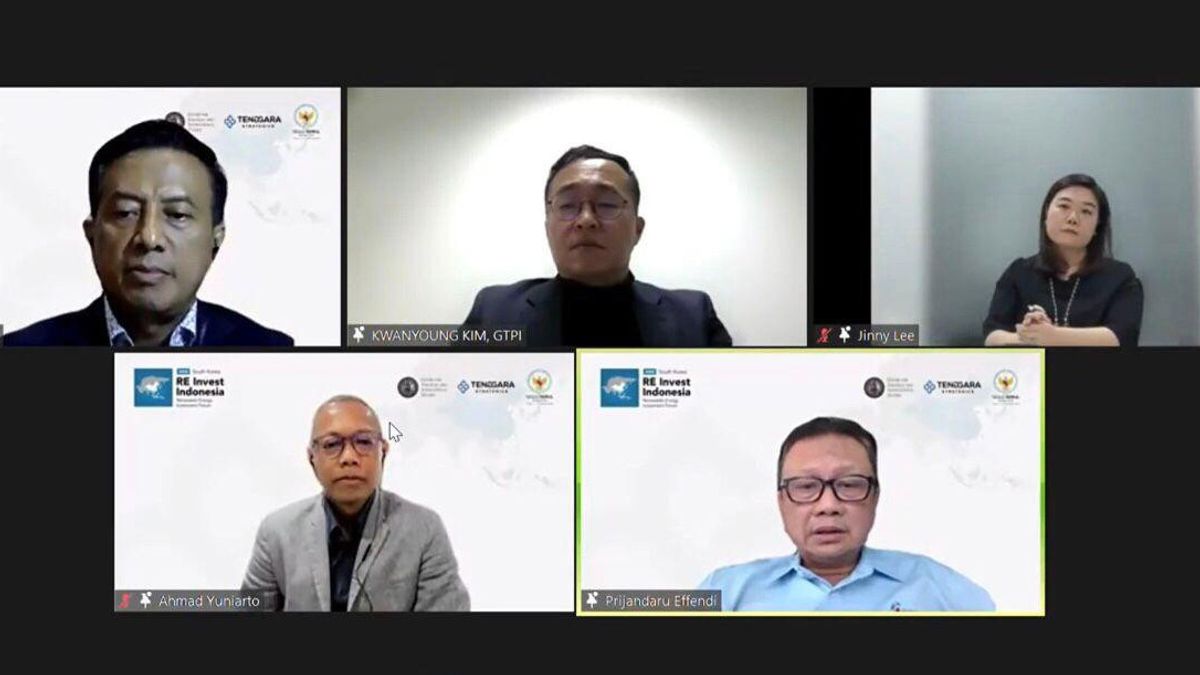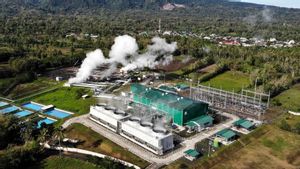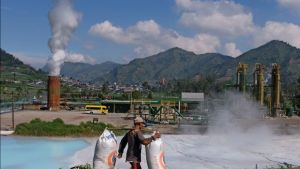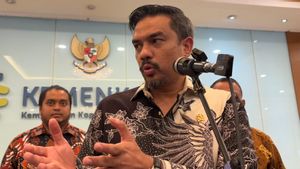JAKARTA - Talking about geothermal energy is actually not just discussing electricity. There are many things from geothermal that can be used for other purposes.
"There are at least five business opportunities that can grow with geothermal energy," said the President Director of PT Pertamina Geothermal Energy in a Webinar entitled "Renewable Energy Invest in Indonesia 2022" organized by CSIS Indonesia and Southeast Strategics (The Jakarta Post) on Thursday, April 7.
The five business opportunities are green hydrogen, CO2 processing, and green raw materials, extraction of nanomaterials, agriculture, and tourism.
"In Europe, the use of geothermal for many purposes is very popular, for example for city heating," said Ahmad.
As an illustration, according to the European Geothermal Energy Council, the installed capacity of geothermal heating in Europe in 2019 has reached 5.5 GWth (GigaWatts Thermal).
Ahmad is optimistic that Indonesia can do the same. Currently, said Ahmad, PT PGE has started to apply geothermal for potato farming in Garut and Kamojang, two areas where PT PGE's geothermal power plant operates.
"The profits obtained by farmers can increase up to 10 times compared to conventional farming," he said.
PT PGE made a cylindrical tank with a diameter of 1.5 meters to sterilize Cocopeat, a growing medium for potato seeds, from bacteria and viruses. Sterilization is done by heating the tank using steam from the Kamojang PLTP.
"Cocopeat heating takes about 4-5 hours," said Zamzam Nurzaman, Head of the Mustika Hutan Village Community Institute (LMDH), Kamojang, Bandung Regency, West Java.
According to Zamzam, previously they heated Cocopeat with drums with wood or gas.
"The current process is faster and the numbers are much larger," he said.
With drums, they can only heat two sacks (60 kg) of Cocopeat at most, while with PT PGE tanks it can heat up to 20 sacks (600 kg).
"We also don't have to pay to PT PGE. Previously we had to pay for wood or gas," he explained.
This heating facility is part of PT PGE's social responsibility program under the name Geothermal Potato (Geotato) since 2018 starting with a trial run. PT PGE provides two heating tanks. One special tank for potatoes, another for mushrooms.
"However, if it's empty, we'll use it too," said Zamzam.
Currently, there are eight farmers engaged in the potato seed business. According to Ahmad Yuniarto, the opportunity for agricultural development (GeoAgro Industry) in the area around the geothermal power plant is still wide open. PT PGE currently has 13 geothermal working areas.
Six of them are already operating and self-managed with a capacity of 672 MW. The six working areas are Kamojang and Karaha in West Java, Sibayak (North Sumatra), Lumut Balai (South Sumatra), Ulubelu (Lampung), and Lahendong (North Sulawesi).
Apart from agriculture, PT PGE also sees enormous potential in the tourism sector in the Lahendong Working Area in Tomohon. The company is planning to build a tourism object with the concept of a geothermal park, for example by utilizing hot springs, tours, and education about geothermal energy.
Green hydrogen
Ahmad Yuniarto in the forum also stated that the use of geothermal for green hydrogen is a very attractive opportunity in the future. In many countries, Geothermal Power Plant (PLTP) is used as a source of electricity to produce hydrogen through the electrolysis process. This hydrogen is used for various purposes. Two of them are for the transportation and petrochemical sectors.
"Green hydrogen will be a game-changer to achieve decarbonization," said Ahmad.
SEE ALSO:
Indeed, said Ahmad, there is still a long way to go.
"We are only in the early stages, still learning how to utilize green hydrogen on a commercial scale," he said.
Unlike the electricity sector, where PLN is ready to buy hot steam from geothermal developers, in the hydrogen industry, developers have to build a whole value chain to get to the final consumer.
Therefore, said Ahmad, PGE will invite all parties in Indonesia to jointly develop hydrogen. There are many advantages derived from the utilization of hydrogen. Apart from reducing energy costs by a huge amount compared to fossil energy, especially when the price of crude oil is rising high as it is today, the use of hydrogen can also reduce carbon emissions.
"Hydrogen is very beautiful for decarbonization," said Ahmad.
As an illustration, Japan is one of the countries that will rely on hydrogen in its decarbonization program in 2050. Last year, the Japanese government allocated USD 3 billion (IDR 43 trillion) only for research on large-scale hydrogen transportation equipment. To achieve Carbon Neutrality by 2050, Japan estimates it will need 20 million tons of hydrogen annually.
These various uses are PGE's commitment to continue developing geothermal energy and ensure the implementation of Environment, Social, and Governance (ESG) to become an integrated part of PGE's geothermal business. The implementation of these ESG aspects is an effort to provide added value and support PGE to government programs related to the use of new, renewable energy that is environmentally friendly, especially geothermal.
Indonesia has declared Net Zero Emission in 2060 or sooner by targeting a reduction in greenhouse gas (GHG) emissions of 29 percent by 2030, and a target of a new renewable energy mix (EBT) of 23 percent by 2025.
PGE's commitment in developing geothermal energy can contribute to achieving the 7th goal of sustainable development targets (clean and affordable energy), the 8th goal (decent work and economic development), and the 13th goal (handling climate change) in Sustainable Development. Goals (SDGs).
The English, Chinese, Japanese, Arabic, and French versions are automatically generated by the AI. So there may still be inaccuracies in translating, please always see Indonesian as our main language. (system supported by DigitalSiber.id)














